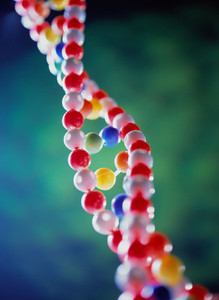One area of great interest to developers, copiers and improvers of therapeutic antibodies is glycosylation, since it can significantly influence the safety and efficacy profiles of the drug. In an article by Claire Morgan and Daryl Fernandes of Ludger published in IPI of Autumn 2009, it is shown how both the original drug manufacturers and the designers of follow-on biologics could produce biobetter antibodies through glycoengineering. In particular, they examine strategies for optimising both fragment antigen-binding (Fab) and fragment crystallisable (Fc) region glycosylation to produce monoclonal antibodies (MAbs) with improved clinical performance and better commercial profiles compared to existing drugs.
Ludger’s GTO-QbD: Defining glycovariant biobetter MAbs
Biosimilars/Research
|
Posted 28/01/2010
 0
Post your comment
0
Post your comment

The authors believe that ‘biobetters’ with improved glycosylation over the original drug are a more exciting proposition than biosimilars. Such drugs would offer medical advantages over biosimilars other than just lower price and increased choice. (see also Modify Fc fucosylation and β-galactosylation for biobetter MAbs, Design out NeuGc, Fab glycosylation for biobetter MAbs, Design out Gal-α(1,3)-Gal for biobetter MAbs, Strategy and tools for building glycoengineered biobetter MAbs and When is a glycoengineered biobetter commercially better than a biosimilar?)
What is a glycovariant biobetter MAb?
Dr Morgan and Dr Fernandes state the first step in designing a biobetter MAb is to define what exactly a biobetter is in relation to follow-on biologics and biosimilars. They observe, however, that at present in the biopharmaceutical industry there seems to be a range of different interpretations of these terms. This confusion arises according to them, in part, from the real difficulty in comparing variants of biopharmaceuticals that are heterogeneous mixtures of exceedingly complex structures with inherent batch-to-batch variability and for which we have only partial understanding of the mode of action and possible aberrant behaviour.
The authors propose to answer this by systematically dividing the problem of ‘determining sameness’ into smaller, independent comparison tasks and dealing with each of these in turn, which is part of a theoretical framework called GTO-QbD (mathematical Graph Theory and Ontology based on Quality by Design) being developed at Ludger. To determine the degree of similarity of a glycosylation variant of an innovator’s drug they compare it to the original with respect to a range of parameters. These include safety and efficacy profiles, biological behaviours e.g. serum half-life and biological activities) and structural attributes (e.g. amino acid sequence and glycosylation patterns). The combination of comparison scores for the ‘copy drug’ indicates its similarity class. Such classification allows different types of copy drug to be treated appropriately with respect to regulation, intellectual property and commercial positioning. Provided the rules for the different treatments were clear, consistent, and agreed within the industry this would overcome many of the problems of using crude definitions of ‘sameness’.
Reference:
Claire Morgan; Daryl Fernandes. Designing Biobetter Monoclonal Antibody Therapeutics by Glycoengineering. International Pharmaceutical Industry (IPI) p. 38-44. Autumn 2009.
Source: International Pharmaceutical Industry (IPI)
News
FDA approves six denosumab biosimilars
EMA recommends approval for four biosimilars targeting three therapies
General
Samsung Bioepis wins Pyzchiva case; Regeneron patent rulings threaten foreign biosimilars
Chinese biosimilars go global: growth, partnerships, and challenges
What is the future for the US biosimilar interchangeability designation

Biosimilars/Research Posted 05/06/2025
Biosimilar clinical efficacy studies: are they still necessary?

Biosimilars/Research Posted 27/05/2025
The best selling biotechnology drugs of 2008: the next biosimilars targets








Post your comment